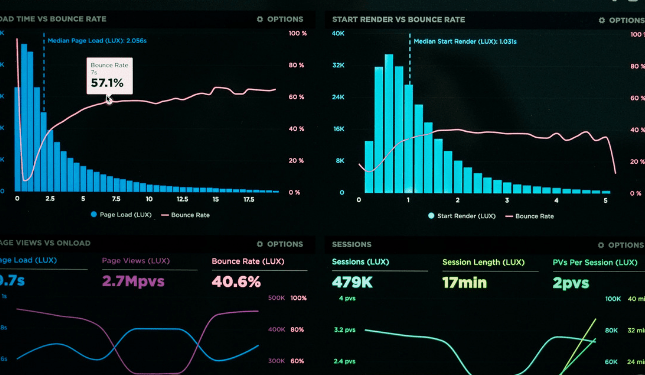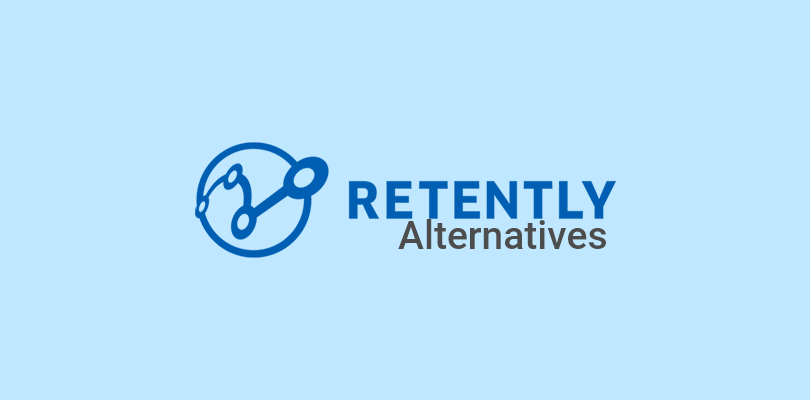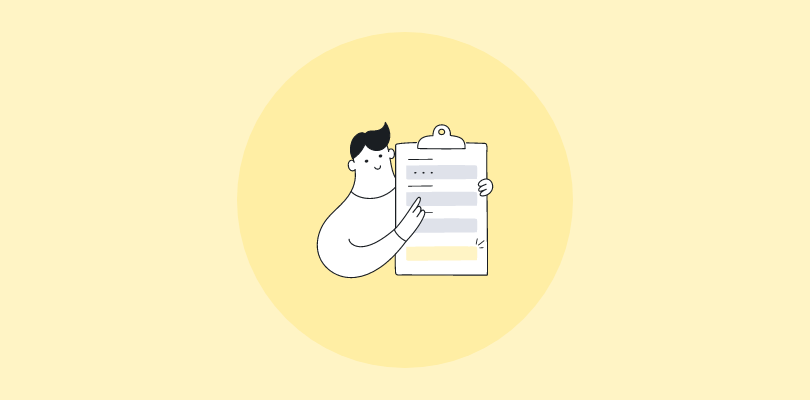SaaS churn rate is a crucial metric every SaaS-based business needs to understand and monitor. The impact of churn seeps into every aspect of your business, whether it’s revenue, brand growth, or brand perception.
But here’s an interesting fact nugget!
Churn does not occur overnight. It results from unsatisfactory and unoptimized experiences that make customers leave your business for better products and services.
It means you have a window of opportunity to track the customer churn in your business and implement systems to reduce it. The trick is finding where to start with an effective SaaS churn strategy.
In this blog post, we’ll dive into the importance of SaaS churn and the metrics to track it effectively. We have also listed some practical strategies to reduce customer churn, improve retention, and maximize revenue.
Let’s get started
What is SAAS Churn?
SaaS (Software as a Service) churn is defined as the rate at which customers cancel or stop using a SaaS product or service over a given period.
Depending on the metric you use, the calculation would include ones that canceled the subscription, downgraded their plan, or both.
The churn rate for the SaaS industry is a crucial growth metric that directly impacts their revenue and growth potential.
It also helps to forecast the revenue for the next period and budget the expansion strategies based on the recurring revenue.
A higher SaaS churn rate means you are bleeding customers and revenue at a faster pace.
In the long run, it can lead to slashing your marketing budget and spending additional costs on retaining the churned customers.
Types of Saas Churn
Different methods are available to calculate the SaaS churn rate depending on the factors you focus on, like revenue or customers. Here are some common Churn rate formulae:
1. Customer Churn Rate
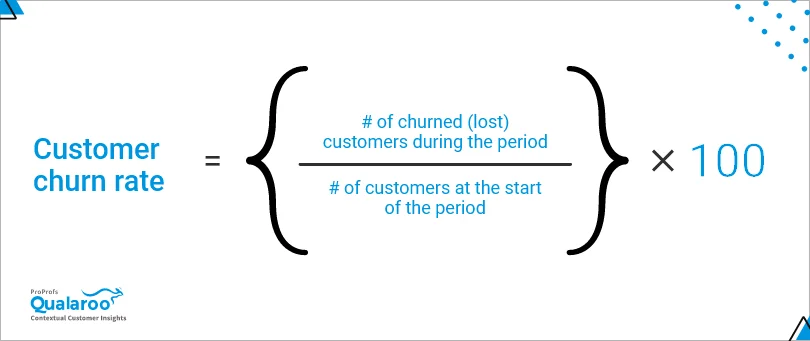
Customer churn rate is the percentage of customers who canceled their SaaS subscriptions over a period.
It is calculated by dividing the number of customers lost during a period by the total number of customers at the beginning.
For example, if you had 2000 customers at the beginning of December and lost 100 by the end of the month, the SaaS customer churn rate becomes 5%.
2. Gross Revenue Churn
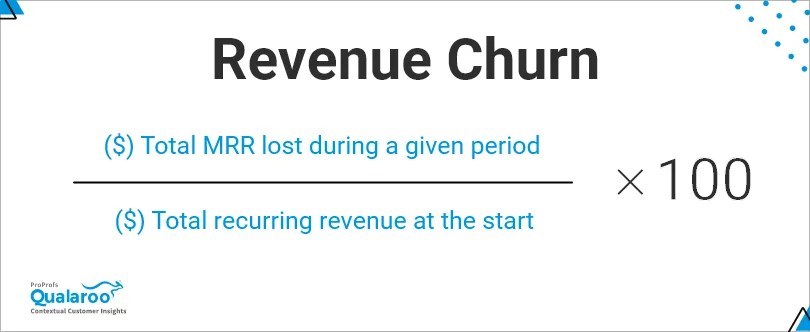
Gross revenue churn focuses on the revenue lost during the period due to churned customers. It’s expressed as the percentage of monthly recurring revenue (MRR) lost during a given period by the total recurring revenue at the start.
This formula considers the customers who canceled their subscriptions as well as those who downgraded the plans during the period.
Suppose your MRR was $10000 at the beginning of December. But you lost $500 due to subscription cancellation and another $500 due to plan downgrades, then the revenue churn for that month is 10%.
3. Net MRR (Monthly Recurring Revenue) Churn
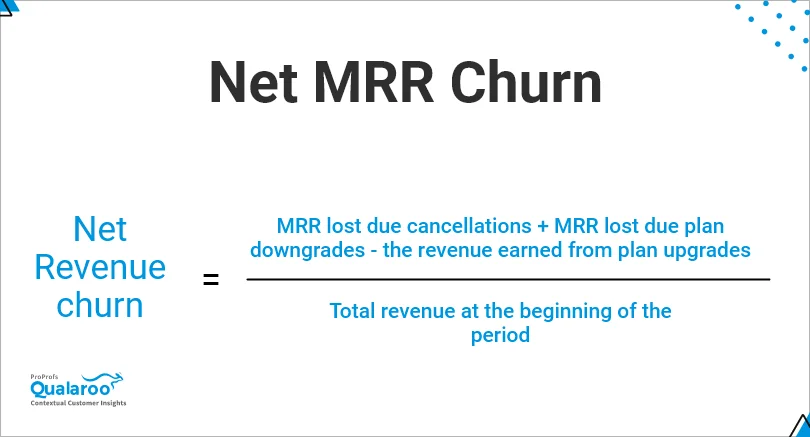
To calculate the net MRR churn in SaaS, you need to subtract the revenue earned from the plan upgrades during the period from revenue churn.
So, the net MRR churn is the revenue lost during the period due to cancellations and plan downgrades minus the revenue earned from plan upgrades divided by the total revenue at the beginning of the period.
Say, you have an MRR of $10000 in December. Now, you lost $500 due to cancellation and another $500 due to plan downgrade. But earnings from the customers who upgraded their current plans were $300.
So the net MRR churn for the month is 7%.
We know there are a lot of different methods, but the importance of using different formulae is to get a clear picture of where the SaaS churn is occurring.
For example, if you have a significant revenue loss due to a plan downgrade, you can always run surveys to find out why people are doing so. Then, work on the issue to stop the bleeding.
Importance of Saas Churn
Here are some reasons you need to track the SaaS churn rate in your business:
1. Customer Retention
A high churn rate means losing customers faster than acquiring new ones, which can affect growth. Then, there is added win-back cost associated with churned customers.
That’s why long-term customers are more cost-effective than acquiring new ones, as existing customers often have a higher lifetime value (LTV) and lower customer acquisition cost (CAC).
2. Revenue Stability
Churn directly impacts a SaaS company’s recurring revenue, an important factor in establishing a healthy and sustainable growth model. A high churn rate can lead to unstable revenue and financial difficulties in the long run.
3. Customer Satisfaction:
Monitoring churn rate can also help track customer satisfaction, as unhappy customers are more likely to cancel their subscriptions.
Companies can improve customer satisfaction and loyalty by understanding and addressing the factors that contribute to churn.
You can also turn these happy customers into brand advocates to attract more customers. We all know the importance of word of mouth in today’s market to shape the purchase decisions of your target market.
Read More: 20 Proven Tips to Improve Customer Satisfaction
4. Business Insights
Analyzing the SaaS churn rate can provide valuable insights into product performance, competitive positioning, and customer behavior. Identifying patterns and trends among churned customers can help businesses improve their product offerings, pricing strategies, and customer support.
5. Investor Confidence
A low churn rate is often seen as a positive signal by investors, as it suggests that a SaaS company can retain its customers and generate consistent revenue. On the other hand, a business with a high churn rate can’t survive for a long time, and investors hesitate to put their money into it.
6 Top Saas Churn Metrics to Monitor in 2025
Churn metrics in SaaS provide valuable insights and analysis into customer behavior and business performance. You can use these numbers to monitor the churn probability of different customer segments and establish SaaS churn benchmarks.
1. Customer Churn Rate
The standard metric for churn is customer churn rate. It measures the percentage of customers who cancel their subscriptions within a given period. It is calculated by dividing the number of lost customers by the total number of customers at the beginning of the period.
Though you cannot stop customers from churning, a higher SaaS churn rate is a reason for concern for any business.
2. Customer Lifetime Value (CLV or LTV)
Customer lifetime value estimates the total revenue a company can expect to generate from a customer over their entire relationship with the company. It’s used to calculate the profit you can earn from acquired customers.

A higher LTV indicates a high repurchase probability and customer retention, which helps to offset the cost of acquiring new customers. It’s best to calculate the LTV for different customer segments to identify which customer type offers the best ROI for your marketing efforts.
3. Customer Acquisition Cost (CAC)
CAC is the average cost to acquire a new customer, considering marketing, sales, and other related expenses. With CAC, companies can gauge how much they are spending on new customers.
You can calculate the CAC for each marketing channel to visualize the most cost-effective ones to gain new customers.
4. LTV : CAC Ratio
Another important SaaS churn metric for any organization is the CLV: CAC ratio. The number is incredibly helpful in gauging your campaigns’ effectiveness in targeting long-term customers for your business.
If the ratio exceeds 1, customer profits are more than the average acquisition cost.
If it dips below 1, the acquisition costs are greater than the revenue generated by the customers, meaning you are incurring losses.
The number helps to make data-backed marketing decisions and divert the funds to the right marketing channels.
5. Average Revenue Per User (ARPU)
ARPU is the average monthly revenue from each user. This SaaS churn metric directly affects the lifetime value and acquisition costs.
It also indicates how much value customers see in your product. A higher ARPU means you have many high-paying customers willing to spend more than your business’s average subscription plan value.
You can use this data to explore upselling and cross-selling opportunities and improve the average purchase value and the LTV: CAC ratio.
6. Net Promoter Score
Net Promoter score directly indicates long-term customer satisfaction and repurchase probability.
The users are asked a simple question – How likely are you to recommend the product to your friends and colleagues?
The answers are noted on a scale of 0-10, and the respondents are categorized into three groups:
- Promoters (9-10)
- Passives (7-8)
- Detractors (0-6)
The NPS score is calculated by subtracting the percentage of detractors from the percentage of promoters.
The importance of NPS lies in the fact that it helps to track at-risk customers.
For example, if a high-value customer is identified as a detractor, they carry a high risk of churn. So you can contact them to collect targeted feedback and resolve their issues to improve satisfaction.
It also helps to explore upselling opportunities for happy customers. For example, if a user rates you 9 or 10, you can send personalized emails to convince them to upgrade their plan to increase the average purchase value.
FREE. All Features. FOREVER!
Try our Forever FREE account with all premium features!
7 Tips to Reduce Saas Churn Rate in 2025
With the metrics in place, it’s time to delve into targeted strategies and tips to reduce the SaaS churn rate in your business:
1. Attract the Right Customers
Optimizing your acquisition process is the first step toward curbing the SaaS churn rate in your business. If you acquire irrelevant customers, they are bound to leave, irrespective of how beneficial or lucrative your product offering is.
So, start by categorizing the customers into segments based on their spending habits, lifetime value, demographics, and psychographics.
Read More: Market segmentation - benefits, types, and strategies
It would give you the ideal customer profiles (ICPs) for your business:
- What business type uses your product?
- What are the different use cases for your product offering?
- Which industry do they belong to?
- What is the size of your ideal customers’ organizations?
- What are your most popular plans?
Here’s how you can create ICPs to bring in the right audience:
- Use a robust CRM like BIGContacts to dig into the customer data of your loyal customers and collect the data points.
- Use mail and in-product surveys to collect product experience feedback from customers and collect behavioral data.
- Collate the data into a spreadsheet to segment the users.
Once you have this data, you can design personalized marketing campaigns and content to attract the right audience.
For example, creating targeted landing pages for different prospect types, delivering the ads over their preferred channels, and crafting the right offers and ads to increase sign-ins.
It would help onboard the right people and plug the drop-offs during the onboarding process and initial product usage stages.
2. Improve Your Onboarding
Once you have the right audience, the next step is to improve engagement and product adoption. Onboarding is the perfect way to reduce the SaaS churn rate during product adoption.
In fact, 84% of companies use onboarding as one of the top tactics to improve customer retention.
Designing an immersive onboarding experience has a three-pronged effect:
- Provides you a chance to showcase your product’s engaging features
- Give you a chance to show the product value
- Educates the users about the product
Here are a few tips for building the interactive onboarding journey for your saas users:
- Make sign-up optional to increase flexibility for users. You can add the sign-up page after the initial steps or at the end of the onboarding process.
- Do go overboard with the feature demonstration. Add only the most relevant features to the tour to keep the process brief.
- Experiment with the number of steps in the onboarding process.
- Engage customers by giving them certain tasks to complete instead of just showing the product features.
Here’s How Slack Does It:
Slack’s onboarding journey is designed to engage first-time users and teach them about the product:
- It teaches the users about the product by making them use it in real time.
- The company has also added in-line tips to familiarize them with the tool settings and features.
- Plus, you can skip the tour at any time if you want.
Remember designing an onboarding experience is an iterative process. So optimize it continuously as your product grows to keep the engagement level and lower the saas churn.
You can add simple CSAT survey forms at the end of the onboarding process to collect customer feedback about their experience.
It would help to pinpoint issues, ask for suggestions, and make changes to optimize the overall experience.
3. Collect Insights From Regular Customers
A customer feedback loop is a must to improve the customer experience and prevent them from jumping off the bandwagon.
Customers also favor brands that accept and work on customer feedback, making insights a solid strategy to reduce the SaaS churn rate.
But why?
- It shows that you value customers’ opinions.
- Gives you insights into the product issues that they face
- Lets you map the gaps in customer support to optimize the services.
If customers know you are working on their feedback, it helps build trust and long-term relationships.
You can also use it to create a CX Index to monitor customer satisfaction and build your saas churn benchmark.
For example, you can run periodic Net Promoter Score (NPS) surveys to gauge product recommendation and repurchase probability. If the score drops over time, it’s a red flag, and you can proactively take action before customers churn.
In the same way, you can leverage CSAT scores to identify unsatisfied costumes and follow up with them to resolve their issues.
But don’t leave happy customers behind. Thank them for their association with your brand with personalized offers or freebies.
Read More: 30+ customer satisfaction questions to ask
Apart from mapping issues, you can use targeted brand awareness and experience surveys to map what makes your product stand apart from competitors.
- What value do people see in your product?
- What problems are they solving with your product?
- What makes them choose your product over others?
Then, you can channel these insights into your marketing and retention strategies to mitigate SaaS churn.
Read More: 60+ brand awareness survey questions to ask
4. Monitor At-Risk Customers
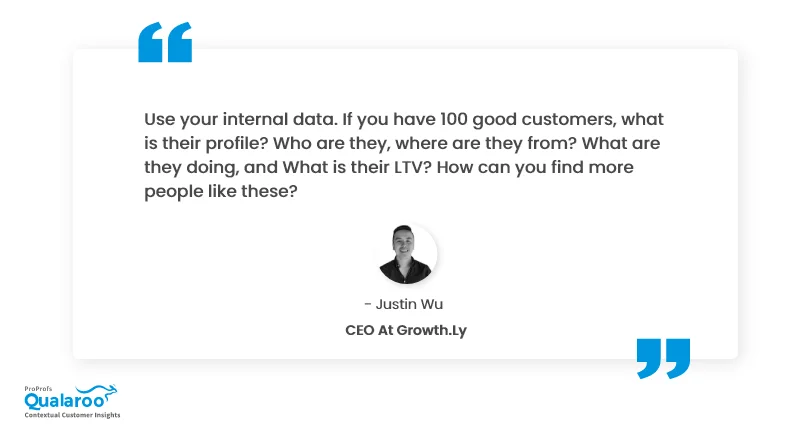
Your CRM and product analytics are powerful tools that can help you map customers’ behavior and track at-risk customers.
Here’s how:
- Collect the user bug report and session data for your development and optimization process.
- If you encounter a product-breaking issue or bug, try to find the customers affected by it and follow up with them to find out if they are still facing it.
- Use your CRM to track the activity of your high-value customers, like last login, payment history, product usage data, etc.
- If you see a dormant account, email the customer to pinpoint the reasons for inactivity and convince them to reactivate the account.
A lot of SaaS churn also occurs due to payment issues. So set automatic internal notifications if a payment fails for a user. Then, you can contact the customer proactively and resolve the issue to reduce the possibility of churn.
5. Collect Feedback From Churned Customers
Apart from existing customers, churned customers are also a gold mine for valuable insights to mitigate the SaaS churn rate in your business.
These customers can help you track the reasons why customers discontinue the services. You can use these insights to convince them to return and remove the issues for future customers.
Here’s how we do it at Qualaroo:
- At Qualaroo, we take churn very seriously. So we have added a small survey on the unsubscribe page.
- When a customer leaves, the churn survey automatically pop-ups to collect feedback.
- The data is sent to our retention team, who starts working on it immediately.
- Time is crucial in such cases. So, they study the feedback and contact the customers to address their concerns and win them back.
6. Add in-Product Help Tooltips & Guides
Knowledge base and help articles are a no-brainer for reducing customer frustration and churn, especially if your product has technical specifications.
But let’s talk about product engagement at the individual feature level.
What if the customer is looking for a short description of what a specific setting or a button does?
They are not looking for a step-by-step process to achieve a goal but a simple explanation of the particular setting. The user can stop what they are doing to search for the same in the knowledge base. Or, you can provide smart in-product tooltips to make the process much easier.
A tooltip is a small popup-based contextual message that provides information about a specific feature, setting, label, or field when you hover over it.
It’s a great mechanic to promote both user engagement and satisfaction.
But here’s the caveat!
Don’t add tooltips at the expense of user experience. They should not obstruct the UI or hinder people from using the product.
Here’s what you can do:
- Add tooltips to the most popular settings and tabs.
- Use heatmaps and session recordings to collect data on where people get stuck and add in-guide links to these places.
- Collect product feedback from users to identify product navigation and usage issues. Then, you can add the in-line guides at these points.
Read More: How to use feedback for product growth
7. Promote Annual Pricing as Opposed to Monthly Subscriptions
The length of your subscription plan can immensely impact the Saas churn rate in your business.
Studies also confirm that longer subscription contracts greatly affect churn. For example, annual subscriptions tend to produce lower user churn rates than monthly subscriptions.
One of the reasons for that is customers can make the purchase decision once a year in a yearly plan instead of 12 times a year for a monthly subscription.
So start by running a pricing analysis to design plans that are both affordable and reduce the risk of churn for your SaaS product.
Here’s how:
- Perform competitive analysis to study the plans of your competitors and what features they offer for each plan.
- Offer discounted prices for longer subscriptions compared to monthly subscriptions, like 10% off on annual billing.
- Collect feedback from users about how they feel about your current pricing structure.
- While reconfiguring the pricing plans, ensure that offered features justify the pricing.
Proactively Monitor SaaS Churn Rate to Improve Retention
Understanding and managing your SaaS churn rate is essential for the long-term success of your software-as-a-service business.
By closely tracking the relevant metrics and implementing the tips we’ve shared, you can minimize churn, improve customer satisfaction, and increase your monthly revenue.
Remember, the key is proactively acting on the red flags and looking for new ways to enhance the customer experience.
Building a churn and MRR dashboard can help you to keep a close eye on trends. Then, use surveys to understand the customers and prospects.
Tools like Qualaroo can help you use in-product surveys to map customers’ behavior, preferences, needs, and expectations.
Once you have data, you can channel the insights into the attrition strategies to build effective systems and keep the SaaS churn rate in check.
Frequently Asked Questions
How to calculate the saas churn rate?
The saas churn rate is calculated by dividing the number of costumes that left your services or unsubscribed from the product over a given period by the total number of customers.
 Tips
Tips
We’d love to hear your tips & suggestions on this article!
FREE. All Features. FOREVER!
Try our Forever FREE account with all premium features!

 We'd love your feedback!
We'd love your feedback! Thanks for your feedback!
Thanks for your feedback!


